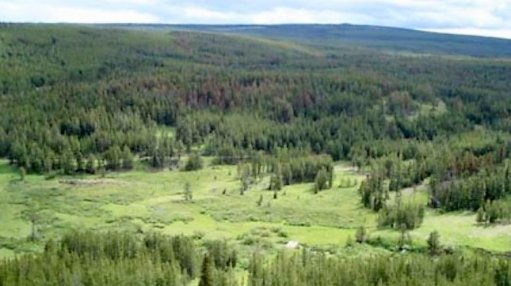
Last week’s Supreme Court of British Columbia ruling denying a First Nation’s legal challenge seeking to overturn an exploration permit for the New Prosperity project is seen as important for future resource projects in the province, base metals miner Taseko Mines president and CEO Russell Hallbauer said on Tuesday.
The court decision, delivered on Thursday, allows Taseko to proceed with investigative work at the New Prosperity site.
"The court decision is unequivocal. The government of British Columbia has the authority to approve resource development work even in the face of Aboriginal opposition. The Crown's obligation is to consult with Aboriginal people and to accommodate their interests where reasonable to do so. However, there is no duty or obligation to secure Aboriginal support for the work being proposed," said Hallbauer.
"Last week's decision provides important guidance to the evolving and often complex relationship between the constitutional rights of Aboriginal people and the responsibilities, duties and obligations the government has to its citizens and their resources," he added.
Taseko said that the work it proposed at the site was investigative in nature and would gather hydrological data and other information required for the British Columbia Mines Act Permitting process.
The company stated that the information would address many of the concerns expressed by the Tsilhqot'in First Nation during the federal environmental assessment, including outstanding questions relating to environmental protection and the New Prosperity water management plan.
The Tsilhqot'in First Nation has expressed its disappointment in the decision, noting that the New Prosperity mine had been rejected twice by the federal government.
“Drilling and exploration work at Teztan Biny stands to destroy centuries of sacred and protected sites that are integral to the preservation of Tsilhqot’in culture. We are disappointed that the courts did not see through the smokescreen; this decision isn’t about Prosperity mine being a good project, it’s about continuing to line the pockets of the shareholders of Taseko Mines. There is more than one way to make money in mining and if there is a tiny glimmer of hope for a project to move forward, such as the possibility of this permit, in the long run it continues to make Taskeo shareholders profit,” said Tsilhqot’in tribal chairperson Joe Alphonse.
Taseko, however, contends that gathering further information would allow it to gain additional scientific evidence needed for key elements of the federal government’s 2014 decision to reject authorisations for the mine.
The company also noted that the Supreme Court judge had noted that Taseko’s tenure rights remained in place until at least 2035.
The Prosperity deposit is a gold/copper porphyry with a one-billion-tonne measured and indicated resource containing 5.3-billion pounds of copper and 13.3-million ounces of gold. The mine, if approved, should produce 110-million pounds a year of copper and 234 000 oz/y of gold over a 33-year mine life.